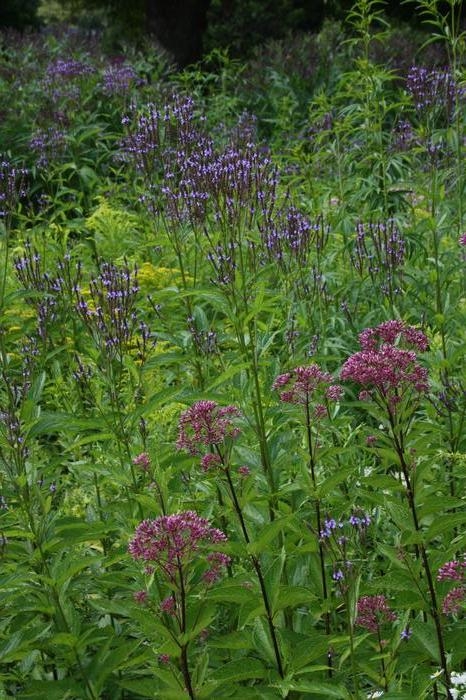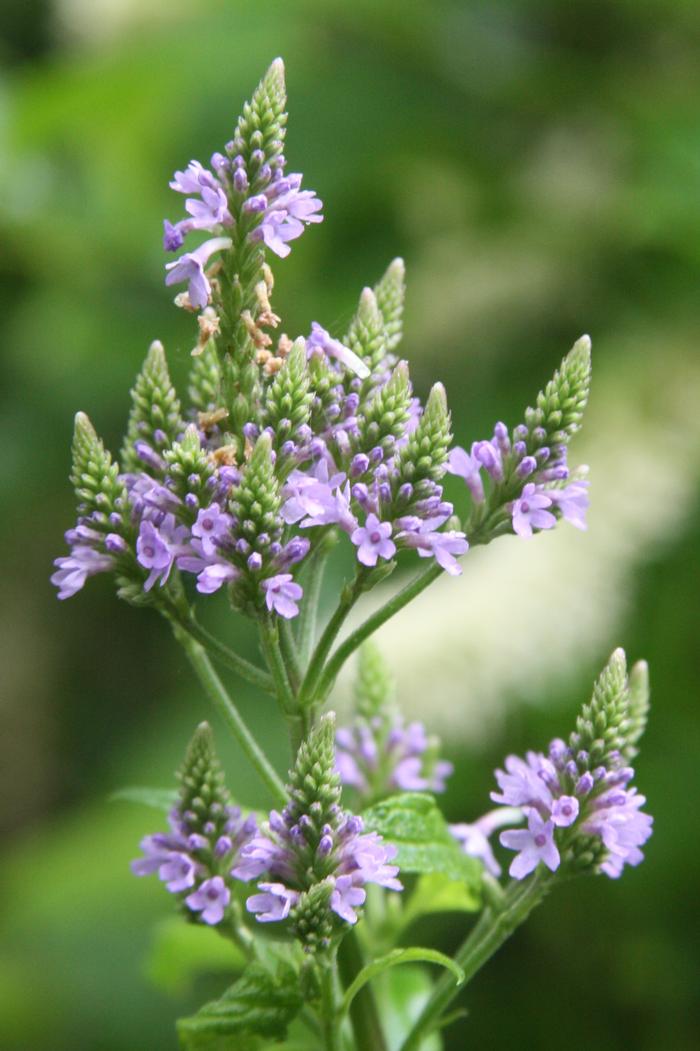General Description
Bloom Description: Erect, broom-shaped inflorescence. Purple flowers bloom from the bottom up, mid summer to fall. Flowers are on straight and narrow spikes, densely clustered together.
Growth Habit & Shape: Biennial plant. Grows colonies through rhizomes and will self seed in ideal conditions.
Soil Preferences: Prefers wet, fertile loam. Can tolerate average-moisture soils.
Root Description: Fibrous and rhizomatous roots that slowly spreads to produce clonal colonies.
Garden Uses: Rain garden, pond border, wet meadow.
Best Management & Maintenance: Leave seed heads to allow for reseeding and to attract seed-eating birds to your yard. Will move around.
Common Problems: Does not do well in drought.
Benefits
Ornamental Value:
"Wildlife Benefits: Larval host plant for verbena moth (Crambodes taliformis) and common buckeye butterfly (Junonia coenia). Important food source for specialist bee, Calliopsis nebraskensis. Seeds are eaten by cardinals, swamp sparrows, field sparrows, song sparrows, and dark eyed juncos.
" Other Practical/Environmental Benefits: Flood tolerant, and can be used for stream bank stabilization.
Use in place of: Loosestrife
Ecology
Habitat:
Wet meadows and edges of streams, rivers, and marshes.
Response to Disturbance: Establishes quickly in disturbed wetlands.
Native State Distributions:
Canada: BC, MB, NB, NS, ON, PE, QC, SK
USA: AL, AR, AZ, CA, CO, CT, DC, DE, FL, GA, IA, ID, IL, IN, KS, KY, MA, MD, ME, MI, MN, MO, MS, MT, NC, ND, NE, NH, NJ, NM, NV, NY, OH, OK, OR, PA, RI, SC, SD, TN, TX, UT, VA, VT, WA, WI, WV, WY
Wetland indicator status: FACW
Companion Plants:
Boneset thoroughwort (Eupatorium perfoliatum), spotted Joe Pye weed (Eutrochium maculatum), goldenrod (Solidago spp.)
References
Return to Top


